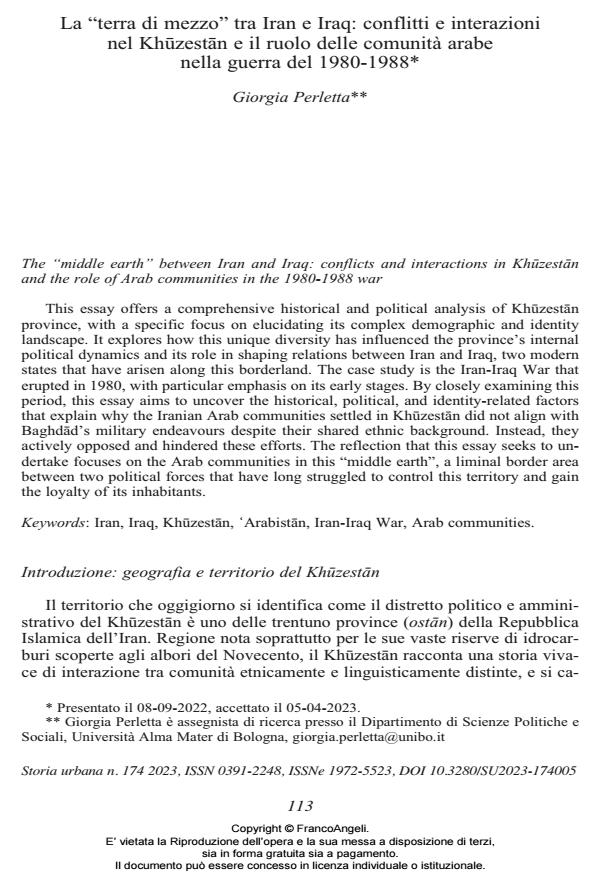The “middle earth” between Iran and Iraq: conflicts and interactions in Khūzestān and the role of Arab communities in the 1980-1988 war
Journal title STORIA URBANA
Author/s Giorgia Perletta
Publishing Year 2024 Issue 2023/174
Language Italian Pages 23 P. 113-135 File size 142 KB
DOI 10.3280/SU2023-174005
DOI is like a bar code for intellectual property: to have more infomation
click here
Below, you can see the article first page
If you want to buy this article in PDF format, you can do it, following the instructions to buy download credits

FrancoAngeli is member of Publishers International Linking Association, Inc (PILA), a not-for-profit association which run the CrossRef service enabling links to and from online scholarly content.
This essay offers a comprehensive historical and political analysis of Khūzestān province, with a specific focus on elucidating its complex demographic and identity landscape. It explores how this unique diversity has influenced the province’s internal political dynamics and its role in shaping relations between Iran and Iraq, two modern states that have arisen along this borderland. The case study is the Iran-Iraq War that erupted in 1980, with particular emphasis on its early stages. By closely examining this period, this essay aims to uncover the historical, political, and identity-related factors that explain why the Iranian Arab communities settled in Khūzestān did not align with Baghdād’s military endeavours despite their shared ethnic background. Instead, they actively opposed and hindered these efforts. The reflection that this essay seeks to undertake focuses on the Arab communities in this “middle earth”, a liminal border area between two political forces that have long struggled to control this territory and gain the loyalty of its inhabitants.
Keywords: Iran, Iraq, Khūzestān, ʿArabistān, Iran-Iraq War, Arab communities.
Giorgia Perletta, La “terra di mezzo” tra Iran e Iraq: conflitti e interazioni nel Khuzestan e il ruolo delle comunità arabe nella guerra del 1980-1988 in "STORIA URBANA " 174/2023, pp 113-135, DOI: 10.3280/SU2023-174005